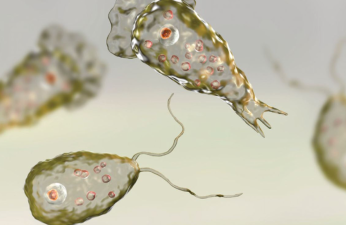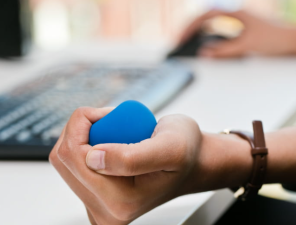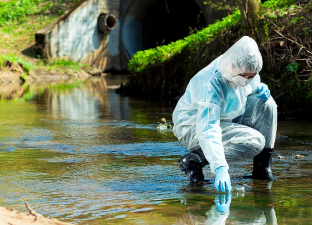Brain-eating amoebas are not insects or worms, but rather a type of single-celled organism found in nature called "free-living amoebas," invisible to the naked eye. Some amoebas are pathogenic and can infect the brain, causing primary meningitis and rapidly destroying brain tissue, hence the name "brain-eating amoebas."
These pathogenic amoebas are primarily found in natural water bodies and soil, such as lakes, rivers, hot springs, and ditches, and are particularly prone to breeding in warm environments.

What is brain-eating amoeba?
"Brain-eating amoeba" is a common name for a species of amoeba. Its scientific name is "free-living amoeba," a single-celled organism that is not a worm itself and cannot be seen.
"Brain-eating parasites primarily include Naegleria fowleri, Balamuthiae, and Acanthamoeba," Li Yuanyuan explained. "Although the name sounds romantic, after invading the human central nervous system, the amoeba rapidly multiplies and spreads along the meninges to the center of the brain, causing intracranial infection. Hence the name 'brain-eating parasites.'" "
What are the routes of infection for brain-eating amoeba?
The primary route of infection is through contaminated water entering the body through the nasal cavity.
When playing in warm freshwater environments such as lakes, hot springs, rivers, and unsanitized swimming pools, if water accidentally enters the nasal cavity, brain-eating amoeba may invade the brain along the olfactory nerve. Using unboiled tap water, well water, or river water to rinse the nasal cavity may also allow the pathogen to enter through the nasal mucosa. Infection can also occur through skin wounds or other contact. Balamuthiae can also enter the body through wounds when broken skin comes into contact with pollutants or moist soil. When wearing contact lenses while swimming or soaking in hot springs, Acanthamoeba can attach to the lenses, causing keratitis.
To avoid safety hazards, doctors offer four lines of defense
- Nasal cavity Protection.
Wear a nose clip when engaging in water activities such as scuba diving, diving, and swimming. Avoid directing water jets into children's nostrils at water parks and fountains. Avoid stirring up mud in shallow water.
- Safe nasal irrigation.
For nasal irrigation, use only boiled and cooled tap water, sterile saline, or distilled water; do not use tap water directly.
- Contact lens safety: Do not wear contact lenses when swimming, soaking in hot springs, or bathing. Do not rinse lenses with tap water.
- Wound protection: Avoid swimming or gardening with broken skin. If unavoidable, bandage the wound before contact with water or moist soil. Protect your hands when engaging in water or gardening activities.
Summer water play is a joy, but it's important to take precautions to ensure you enjoy the cool breeze while avoiding potential safety hazards.







